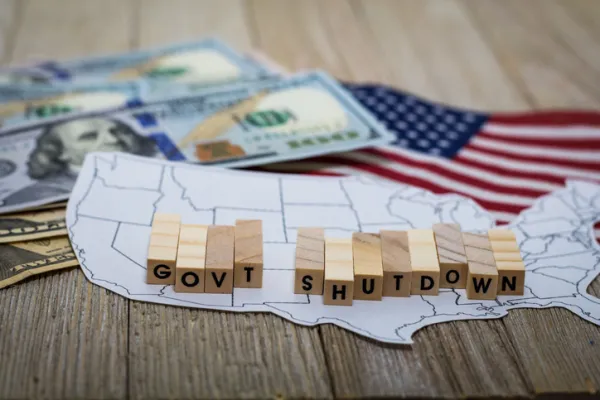If you want to evaluate the tech sector today, first figure out which metaphor you’re going to run with. Start-up evaluations are skyrocketing, seed stage investment funds are proliferating, institutional money from mutual and hedge funds is flowing into late stage companies and venture capital financing is approaching levels not seen since the dot-com boom of 1999-2000. Is this a bubble? Or is it something else — a trampoline, say, or a jumping castle? Perhaps we’re really in a blob. Figurative rivers of ink have been spilled over the last 12 months as journalists, VCs and entrepreneurs have argued over whether the private markets — and technology start-ups in particular — are overheated. Mostly this has involved copious use of the B-word, with VCs viciously rebutting any suggestion that the companies they put their money into are expensive relative to their fundamentals. But at Institutional Investor’s Delivering Alpha conference today, as the debate reared its slightly unwelcome head once more, investors took a few alternatives out for a spin.
“Maybe your new metaphor is the trampoline,” said Esther Dyson, chairman of early-stage venture firm EDventure Holdings. “You jump up and down, it’s uneven and volatile, and jumping off can be dangerous.” There’s little doubt more capital is rushing into start-ups: Traditional VC funds raised $49 billion last year, according to Thomson Reuters, but once new sources of capital are added to the mix — especially in early and late stage investing — total funding levels last year were close to the roughly $100 billion raised in 2000. Much of this new early-stage capital is becoming “institutionalized,” to use Dyson’s term, with angels organizing into syndicates through platforms such as AngelList and seed funds — which typically write small checks across a large number of very early stage companies, in contrast to the mid-range, Series A or B focus of most traditional VCs — exploding in number.
Is this new capital smart capital? Dyson doesn’t think so, especially in early stage investing. At the seed stage, “there’s way too much money going into completely redundant imitative start-ups,” she said. Early stage investors often like to trumpet that they offer young companies more than just a check: they give strategic advice, they come armed with domain expertise and product knowledge, they can provide useful introductions to potential collaborators. Dyson questions whether many of the investors rushing into early stage start-ups can make this claim with any sincerity. “If you have 50 angels investing in your company, you’re not getting a lot of advice,” she said. The result is that ideas of questionable value are getting funded — and many of them address needs relevant to a trivial slice of the world’s population. The problems most early stage companies are solving, said Dyson, “are the problems of the one percent.” As the early stage world becomes a hall of mirrors filled with copycat companies catering to the rich, the attrition rate of companies from seed stage to Series A is increasing. “You’re getting Darwinian blind evolution rather than intelligent design,” said Dyson.
Venture capital’s blindspot to sectors and issues removed from the everyday experience of Silicon Valley and East Coast elites has been widely documented. But is the high attrition rate from seed to Series A necessarily a bad thing? If anything, that surely demonstrates the strength of a system in which bad ideas go unrewarded. The whole premise of the risk allocation at the heart of venture capital is that most funded seed-stage companies will fail. Venture capital is a funnel — many companies get funded at the top, few make it through to an exit. The idea that we’re in a bubble rests on the bulge in capital entering private companies at the early and late stages of their development — the so-called “barbell” effect. But early stage capital, for all its growth, still represents a tiny fraction of overall VC funding: Scott Kupor, partner and COO at high-profile VC firm Andreessen Horowitz, puts it at 5 percent. There’s no systemic risk if the early stage bubble bursts; indeed, that’s precisely how VC is supposed to work. “There’s a natural winnowing process,” said Kupor. “Most companies won’t get to an A round, but for A round investors there’s a broader range of companies to look at. That’s good for the ecosystem.”
At the end of the funding cycle, however, the story is different. There, successful growth stage start-ups — many of them so-called “unicorns,” with valuations in excess of $1 billion — are attracting capital from an ever-growing family of mutual funds (like Fidelity and T. Rowe Price), hedge funds (like Tiger Global Management and Coatue Management), PE firms and banks. These investors, in contrast to seed funds and traditional VCs, have far greater balance sheets to play with; this has fed the perception they may be overpaying as they build stakes in late stage, pre-IPO darlings — such as Uber, Snapchat and Airbnb. Kupor rejects the argument these late stage “tourists” are paying unreasonable prices. “You expect Fidelity and Coatue to pay higher prices than traditional VC,” he said, arguing that the different return expectations of different categories of investor mean there are different notions of what constitutes a fair price. “They’re IRR-driven investors; their benchmark is the S&P 500. They don’t need to generate three or five times on the investment” the way a VC does, he added.
This is an answer to the bubble question through other means: Late-stage valuations look rich, but in Kupor’s reading the expense is justified, given the profile of the investors increasing their participation in the space. Kupor is not a total bubble refusenik, however: If more LPs charge into private markets, that could distort pricing further, he thinks. And if there’s a downturn in the economy, “the IPO market could freeze, and later stage investors might pull their money out” of private companies as the timeline to a public exit blows out, he added. Some recent IPOs of former late-stage tech darlings (most notably Box, which held its share sale earlier this year) have seen companies price publicly at levels below their private late-stage valuations. That is “obviously not ideal,” said Kupor — while doggedly refusing to admit this was evidence of a bubble. As long as economic conditions remain supportive, a rash of late stage start-ups look likely to go public over the next 18 months. These IPOs will give a fresh insight into the debate. And make no mistake: no matter what the name of its subject — bubble, trampoline, blob — that debate shows every sign of charging on toward 2015 with undiminished intensity.
Get real-time updates throughout the day on our Delivering Alpha Live Blog.







